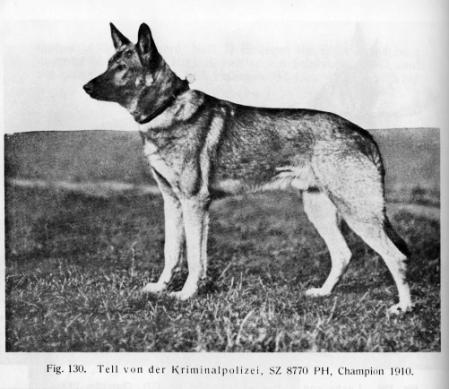If I saw a German Shepard walking the way the ones in the show were walking, I'd think it was on its last legs (my old Schnauzer started walking that way toward the end of his life as his hips weakened).
Actually the GSDs depicted in the program are not that extreme. The problem is that they used the worst possible footage. The American line GSDs are by far, much, much worse if you can believe it. In the UK, they show German show line dogs like you see in the program. They move well but since they are a large dog with a rectangular shape, more angulation than other breeds, open shoulder angulation, they really need a large ring to be shown off correctly. It was years ago that I watched this program but I remember noting at the time thinking that whoever made the program did a good job of using really unflattering footage. The dogs are not even gaiting because the ring is so small. The handlers are also doing a poor job, but the Kennel Club and AKC are looking for something totally different than how I and other GSD fanciers show our dogs (German style). They don't care if the dog is "strung up" on the lead and being dragged around. I should probably watch the clips again, but I remember those dogs looking terrible because the ring was not appropriate, the dogs need more ring training, and the program was using bad footage of bad handling. The "down and back" is really not how you judge a dog's overall movement and conformation.
It's a common misconception that you can see bad hips. You can't. Hip dysplasia is diagnosed by x-ray only. I've seen dysplastic dogs move clean and OFA excellent dogs move like someone just cut their ligaments and then clubbed them over the back before they stepped into the ring. The problems with the show line German shepherds is the extreme angulation in the rear, loose ligaments, longer thighs and hocks, and steep croups. None of these have anything to do with the hips or hip dysplasia/arthritis (the shape of the femoral heads and how they fit into the socket).
Anyway Liesje, posting the video wasnt meant to be damning to all breeders.
I understand, just stating my POV lest anyone think that a TV program with an agenda represents the majority (it does not).
What's important is that even though the dog is one species, you can spend a lifetime, even generations in one family devoted to a single breed. I might know an awful lot about GSDs but that doesn't mean I know two things about a Rhodesian Ridgeback. One thing I did not like about the program is that it sort of haphazardly focused on a smattering of breeds and then tried to represent all breeders or persons involved in conformation in any capacity as the devil. For all I know, Pekingese fanciers are the devil, but the closest I'd ever get to that breed and those people are if their dog wins the toys and mine wins the herding and we are in the BIS ring together for 20 minutes. There are a lot of valid questions and concerns brought up in the program but people should absolutely not be making decisions about dogs, breeds, or breeders based on snippets from that program. It's just not fair.



 It's ok, guys. She's from the mid-west.
It's ok, guys. She's from the mid-west.